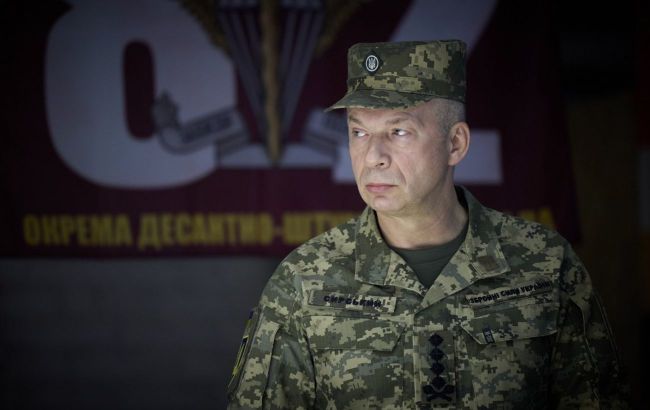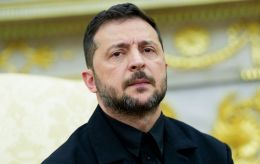Ukraine's army chief responds to controversial NYT article on counteroffensive failure
 Photo: Oleksandr Syrskyi (president.gov.ua)
Photo: Oleksandr Syrskyi (president.gov.ua)
During last year's counteroffensive, Ukraine conducted offensive operations with only two brigades from the group. This was not enough to liberate Bakhmut and Soledar in the Donetsk region, states Commander-in-Chief of the Armed Forces of Ukraine Oleksandr Syrskyi in an interview with LB.ua.
What led up to this
Recently, The New York Times published an article stating that Valerii Zaluzhnyi, who was then the Commander-in-Chief of the Armed Forces of Ukraine, had proposed a plan involving an offensive toward the southern city of Melitopol. Such actions would have allowed Ukrainian forces to cut off Russian supply lines.
However, Oleksandr Syrskyi, who at the time was the commander of the Khortytsia Operational-Strategic Grouping, proposed launching a counteroffensive in the Bakhmut direction, specifically aiming to liberate Bakhmut. President of Ukraine Volodymyr Zelenskyy supported Syrskyi’s plan. As a result, Ukrainian forces were split between two main fronts instead of concentrating on one.
What Syrskyi says
Syrskyi was asked to comment on the article and the suggestion by Americans that this decision may have contributed to the counteroffensive’s lack of success.
"Every one of our officers and generals who took part in the fighting knows that this simply doesn’t correspond to reality," Syrskyi responded.
According to him, Ukraine did indeed conduct offensive operations south of Bakhmut. However, only two brigades from the group were involved in the assault.
"If we had five brigades, I believe both Bakhmut and Soledar would have been liberated. In fact, the enemy would have left on their own. Because the idea behind the operation was to cut off the three main roads used for logistical support to that group," the Commander-in-Chief explained.
He said it was clear during the planning phase of the counteroffensive that there were not enough forces. They only had two brigades with no additional ammunition — the available supply was only enough for regular operations in a standard mode.
Still, the plan relied on surprise and the expectation that Ukrainian forces, through "risky but bold actions," would break through the enemy’s defenses — especially since the Russian forces were not prepared for a Ukrainian counteroffensive.
"We were hoping to advance and cut the road between Bakhmut and Horlivka — that was one. The second road we wanted to cut on one side was the Bakhmut–Debaltseve road. That’s the main route used for logistical support. And branching off from it was the road to Popasna. That’s another road that connected to the main highway," Syrskyi said.
He believes that if the plan had worked, the enemy would have been forced to retreat to avoid being trapped.
"But that didn’t happen. Unfortunately. We simply didn’t have enough troops and resources," he said.
For more on the current situation on the front lines, read RBC-Ukraine’s As Washington talks peace, Moscow escalates. Latest from Russia-Ukraine frontlines report.

